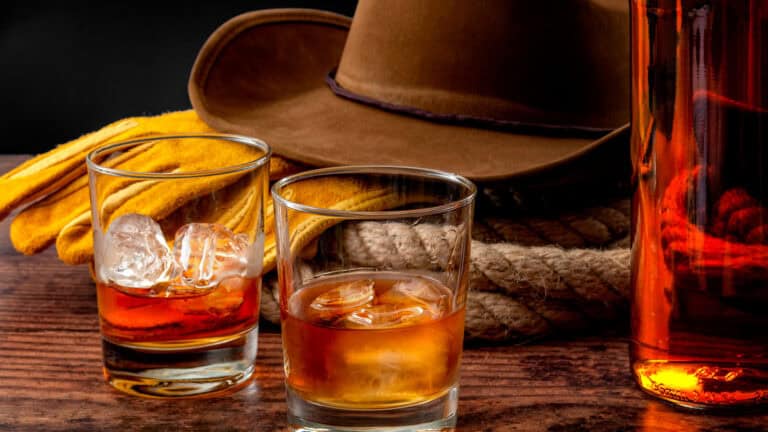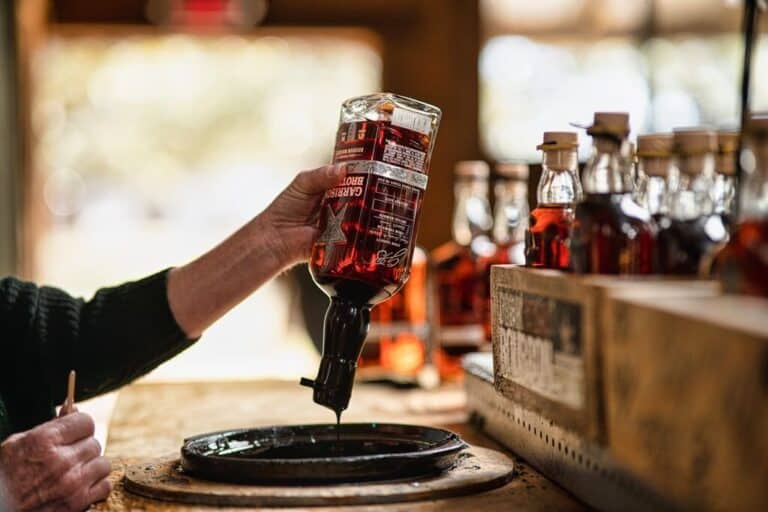Economic Impact and Market Trends in American Whiskey and Bourbon
The American whiskey and bourbon industry has undergone significant transformations over recent years, contributing substantially to local economies and international markets. This article delves into the current overview of economic impact and market trends along with future shaping this vibrant sector.
Market Overview
Growth in the Whiskey Industry
The American whiskey industry has experienced remarkable growth, driven by increasing consumer demand and innovative production techniques. From small craft distilleries to large-scale producers, the industry has expanded its reach both domestically and internationally. This growth is attributed to several factors, including:
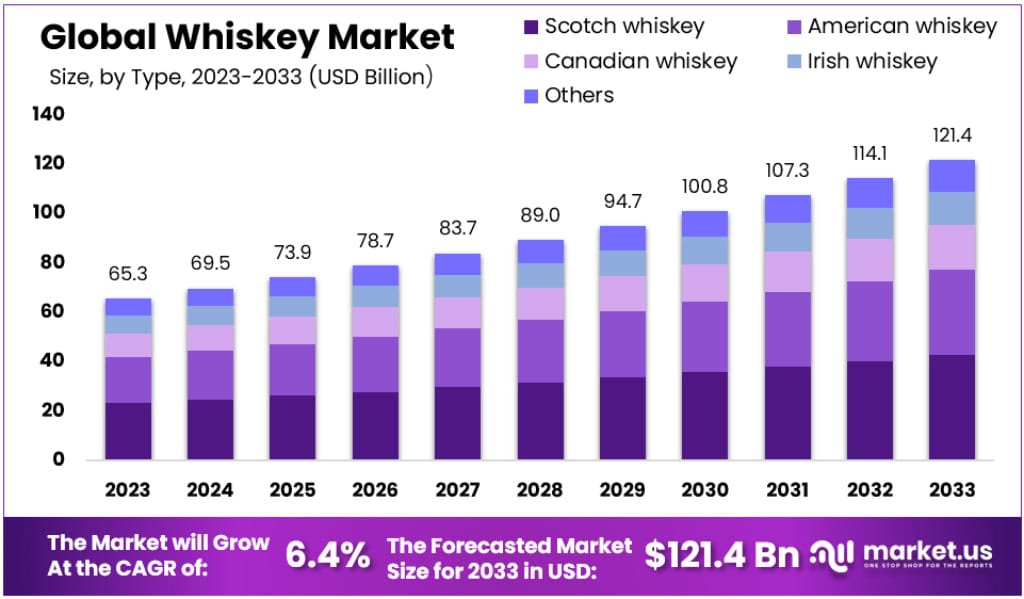
- Rising Popularity: Whiskey has seen a surge in popularity among a diverse demographic, particularly among younger consumers and women, who are increasingly exploring different whiskey varieties. The allure of whiskey stems from its rich history, complex flavors, and the sense of sophistication it conveys.
- Premiumization: There is a growing trend towards premium and super-premium whiskey products, with consumers willing to pay more for high-quality, aged, and unique flavor profiles. This shift is partly due to the increased availability of disposable income among consumers and the desire for exclusive, high-end products that offer a luxurious experience.
- Craft Distilleries: The rise of craft distilleries has played a significant role in the industry’s growth, with these smaller producers bringing innovative approaches and unique offerings to the market. Craft distilleries often emphasize traditional methods, local ingredients, and distinctive flavors, attracting enthusiasts who seek authenticity and originality in their whiskey.
Moreover, the growth in the whiskey industry has been supported by strategic marketing efforts that highlight the heritage and craftsmanship behind each bottle. Brands have leveraged storytelling, social media, and influencer partnerships to connect with consumers on a deeper level, fostering brand loyalty and expanding their reach.
Trends in Bourbon Sales
Bourbon, a distinctly American whiskey, has witnessed significant sales growth, becoming a key driver in the whiskey market. Several trends have emerged in bourbon sales:

- Authenticity and Heritage: Consumers are increasingly drawn to bourbon’s rich history and tradition, seeking brands that emphasize authenticity and heritage. This trend is evident in the popularity of heritage brands that have been producing bourbon for generations, as well as new distilleries that emphasize their commitment to traditional methods and local sourcing.
- Single Barrel and Small Batch: The popularity of single barrel and small batch bourbons has grown, as these products offer unique flavor experiences and exclusivity. Single barrel bourbons are prized for their individuality, with each barrel imparting distinct characteristics to the whiskey. Small batch bourbons, on the other hand, are produced in limited quantities, often using carefully selected barrels to create a harmonious blend.
- Flavored Bourbon: Innovation in flavored bourbon has attracted new consumers, offering a range of taste profiles that appeal to a broader audience. Flavored bourbons, such as those infused with honey, cherry, or cinnamon, provide an accessible entry point for those new to bourbon while also catering to seasoned drinkers looking for something different.
In addition to these trends, bourbon sales have benefited from strategic export efforts, with brands actively promoting their products in international markets. The growing global appreciation for American bourbon has opened up new opportunities for producers, further driving sales and market expansion.
Economic Contribution
Impact on Local Economies
The whiskey and bourbon industry significantly contributes to local economies, particularly in states known for their whiskey production, such as Kentucky and Tennessee. Key economic impacts include:
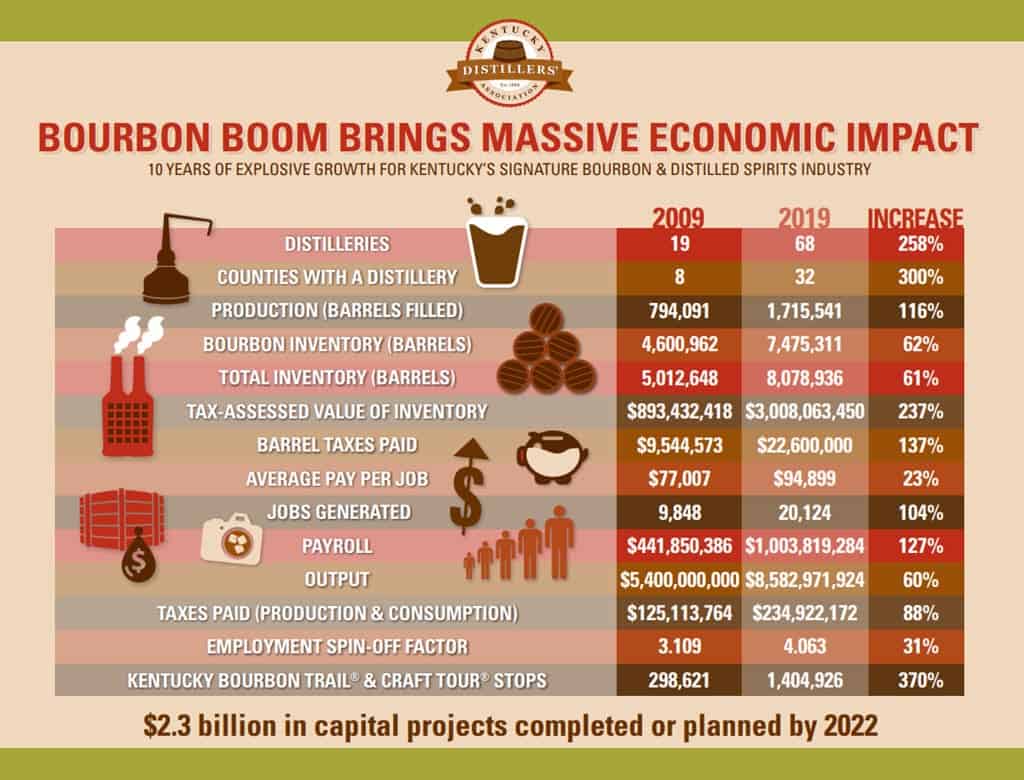
- Job Creation: The industry supports thousands of jobs, from production and distillation to marketing and sales, benefiting local communities. These jobs encompass a wide range of roles, including distillers, coopers, marketers, tour guides, and hospitality staff. The ripple effect of these jobs extends to related industries, such as agriculture, packaging, and logistics.
- Tourism: Whiskey tourism has become a vital part of the industry, with distillery tours and whiskey trails attracting visitors from around the world, boosting local hospitality and service sectors. States like Kentucky have capitalized on this trend by promoting the Kentucky Bourbon Trail, a collection of distilleries offering tours, tastings, and educational experiences. This initiative has become a significant tourist attraction, drawing millions of visitors annually and generating substantial revenue for local businesses.
- Agriculture: The industry also supports local agriculture, as distilleries source grains like corn, rye, and barley from local farmers, creating a symbiotic relationship. The demand for high-quality grains has encouraged farmers to invest in better farming practices and sustainable methods, further enhancing the quality of the raw materials used in whiskey production.
Moreover, the industry’s commitment to sustainability has led to the development of eco-friendly practices, such as water conservation, waste reduction, and renewable energy use. These initiatives not only benefit the environment but also contribute to the industry’s long-term viability and positive reputation.
Export Markets
American whiskey and bourbon have become significant players in the global market, with exports contributing to the industry’s economic footprint. Important aspects include:
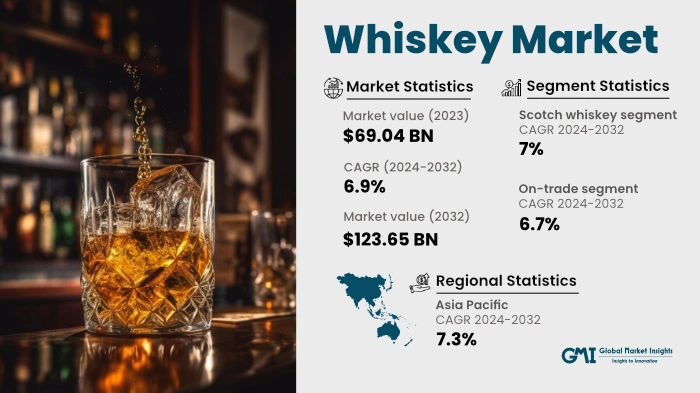
- International Demand: There is growing demand for American whiskey and bourbon in international markets, particularly in Europe and Asia, where consumers are increasingly appreciating American whiskey’s quality and distinctiveness. This demand is fueled by the global trend of premiumization and the rising popularity of American culture and lifestyle.
- Trade Policies: Favorable trade policies and agreements have facilitated the export of American whiskey, though trade disputes and tariffs can impact market dynamics. The industry’s ability to navigate these challenges and adapt to changing trade environments has been crucial in maintaining and expanding its international presence.
- Brand Recognition: Strong branding and marketing efforts have elevated the global recognition of American whiskey, making it a sought-after product in premium spirits categories worldwide. Iconic brands like Jack Daniel’s and Jim Beam have become household names, synonymous with quality and American heritage. These brands have leveraged their strong reputations to penetrate new markets and establish a loyal customer base.
Furthermore, the industry’s export success has encouraged investment in production capacity and infrastructure, enabling distilleries to meet the growing international demand. This expansion has, in turn, created more jobs and economic opportunities in the U.S., reinforcing the industry’s positive economic impact.
Future Trends
Innovations in Whiskey Production
The future of American whiskey and bourbon is being shaped by various innovations in production techniques and processes. Key innovations include:
- Sustainable Practices: Distilleries are increasingly adopting sustainable practices, such as using renewable energy, recycling water, and sourcing locally grown, organic grains to reduce their environmental footprint. These efforts are driven by consumer demand for environmentally responsible products and the industry’s commitment to preserving natural resources.
- Advanced Aging Techniques: Innovations in aging, including the use of different types of barrels and accelerated aging processes, are allowing producers to create unique flavor profiles and bring products to market faster. Techniques such as using smaller barrels, charred barrels, and secondary aging in wine or beer casks have resulted in a diverse range of whiskey flavors that cater to various tastes.
- Technology Integration: The use of technology in production, from precision fermentation to automated distillation, is enhancing efficiency and consistency in whiskey production. Advanced sensors, data analytics, and artificial intelligence are being employed to monitor and control the production process, ensuring optimal conditions and high-quality outcomes.
In addition to these innovations, the industry is exploring new product categories and flavor combinations to appeal to a broader audience. This experimentation includes creating hybrid spirits, such as whiskey infused with botanicals or aged in unconventional barrels, offering consumers novel and exciting drinking experiences.
Changing Consumer Preferences
Consumer preferences are continually evolving, influencing the direction of the whiskey and bourbon market. Significant changes include:

- Health Consciousness: As consumers become more health-conscious, there is a growing demand for products with lower alcohol content and natural ingredients. This trend has led to the development of lower-proof whiskeys, organic options, and products with clean labels that highlight their natural and minimally processed ingredients.
- Craft and Artisanal Products: The desire for craft and artisanal products remains strong, with consumers seeking unique, small-batch, and limited-edition releases. This preference is driven by a desire for authenticity, quality, and exclusivity, as well as a growing interest in supporting local and independent producers.
- Experiential Consumption: Experience-based consumption is on the rise, with consumers looking for immersive experiences, such as distillery tours, tasting events, and whiskey festivals. This trend reflects a shift towards valuing experiences over material possessions, with consumers seeking meaningful and memorable interactions with brands.
- Diversity and Inclusion: The industry is also seeing a push towards greater diversity and inclusion, both in terms of the consumer base and within the industry itself. Efforts to attract a more diverse audience include marketing campaigns that highlight the inclusivity of whiskey culture and initiatives to support minority-owned distilleries and brands.
The American whiskey and bourbon industry stands at an exciting juncture, driven by robust growth, economic contributions, and forward-looking trends. As producers continue to innovate and adapt to changing consumer preferences, the future of this iconic industry looks promising, ensuring its continued impact on both local and global economies.
FAQs
Disclosure: Our blog contains affiliate links to products. We may receive a commission for purchases made through these links. However, this does not impact our reviews and comparisons. We try our best to keep things fair and balanced, in order to help you make the best choice for you.



